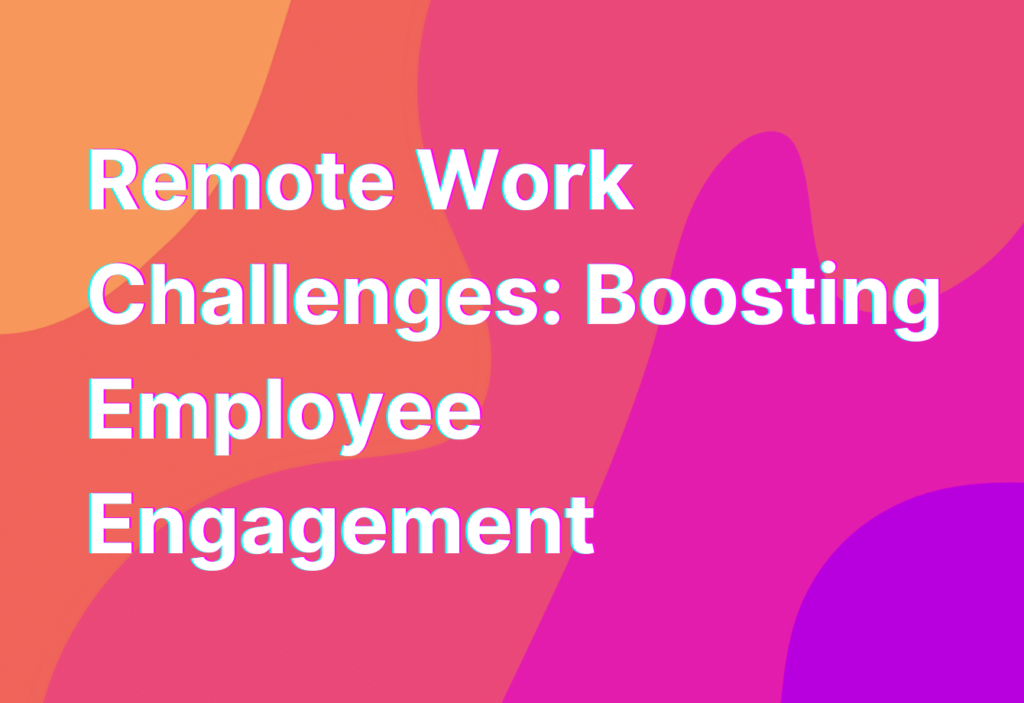Remote Work Challenges: Boosting Employee Engagement
Working remotely has become increasingly popular in recent years, with more and more companies embracing the flexibility and benefits it offers. However, remote work also comes with its own set of challenges, particularly when it comes to employee engagement. In this article, we will explore some of the common challenges faced by remote workers and provide tips on how to boost employee engagement in a remote work environment.
The Challenge of Building Relationships
One of the biggest challenges of remote work is the lack of face-to-face interaction. Building relationships and fostering a sense of camaraderie can be more difficult when you’re not physically present in the same office. However, there are several strategies you can employ to overcome this challenge:
- Encourage virtual team-building activities: Organize virtual team-building activities such as online games, virtual happy hours, or even virtual coffee breaks. These activities can help foster a sense of connection and build relationships among remote team members.
- Utilize video conferencing: Whenever possible, opt for video conferencing instead of audio-only calls. Seeing each other’s faces can help create a more personal connection and make remote team members feel more engaged.
- Create a virtual watercooler: Set up a dedicated chat channel or virtual space where team members can casually chat and share non-work-related updates. This can help recreate the informal conversations that often happen around the office watercooler.
- Encourage open communication: Foster a culture of open communication where team members feel comfortable reaching out to each other for support or to share ideas. This can help build trust and strengthen relationships among remote team members.
- Organize in-person meetups: If possible, consider organizing occasional in-person meetups or retreats where remote team members can come together and spend time bonding face-to-face.
The Struggle with Work-Life Balance
Another challenge faced by remote workers is maintaining a healthy work-life balance. Without the physical separation of a traditional office, it can be difficult to switch off from work and create boundaries between work and personal life. Here are some tips to help remote workers achieve a better work-life balance:
- Establish a dedicated workspace: Set up a designated workspace that is separate from your living area. This can help create a physical boundary between work and personal life.
- Stick to a schedule: Establish a regular work schedule and try to stick to it as much as possible. Having set working hours can help create a sense of structure and make it easier to switch off from work when the day is done.
- Take regular breaks: It’s important to take regular breaks throughout the day to rest and recharge. Step away from your workspace, go for a walk, or engage in a non-work-related activity to clear your mind.
- Set boundaries with others: Communicate your working hours and boundaries with family members or roommates to ensure they understand when you need uninterrupted time to focus on work.
- Practice self-reflection: Self-reflection is an important tool for maintaining a healthy work-life balance. Take the time to assess your priorities, set goals, and make adjustments as needed. You can learn more about self-reflection and its benefits here.
The Feeling of Isolation
Remote work can sometimes lead to feelings of isolation and disconnection from the rest of the team. To combat this challenge, consider the following strategies:
- Regular check-ins: Schedule regular check-ins with team members to provide updates, discuss projects, and address any concerns. This can help remote workers feel more connected and part of the team.
- Encourage collaboration: Foster a collaborative work environment by utilizing tools such as project management software, instant messaging platforms, and video conferencing. Encourage team members to collaborate and share ideas.
- Provide opportunities for social interaction: In addition to work-related communication, create opportunities for social interaction among team members. This can include virtual team lunches, online game nights, or even a dedicated chat channel for non-work-related conversations.
- Recognize and celebrate achievements: Make an effort to recognize and celebrate the achievements of remote team members. This can help them feel valued and appreciated, even from a distance.
- Encourage professional development: Support remote workers in their professional development by providing access to online courses, webinars, or conferences. This can help them stay engaged and motivated in their work.
Wrapping Up
While remote work comes with its own set of challenges, boosting employee engagement is possible with the right strategies in place. By focusing on building relationships, maintaining a healthy work-life balance, and combating feelings of isolation, remote teams can thrive and achieve high levels of engagement. Remember, remote work doesn’t have to be isolating or disengaging. With the right approach, it can be a fulfilling and rewarding way to work.


